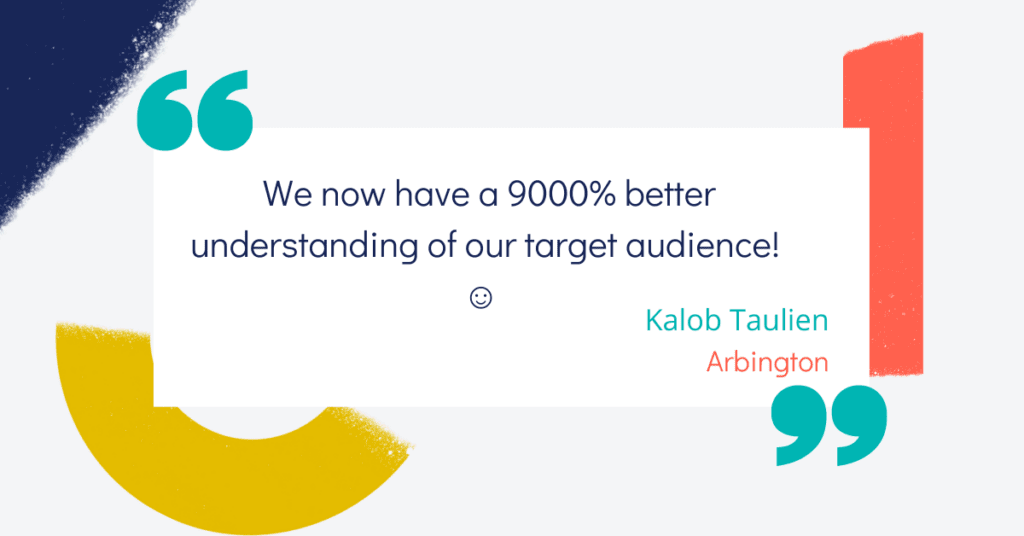
So – you’ve got some work to do on building your sales engine.
Maybe you already knew that. Or maybe you’re not sure. No matter which scenario you’re in, let’s get you UN-stuck. Here’s where to get started.
Step #1: Nail down the fundamentals
To ensure your sales engine is dialed in, you need to first nail down your fundamentals. (I know, you’ve heard this before – but it’s critical.)
With your ICP (Ideal Customer Profile), you’ll have to get very granular – identifying the attributes that help you identify and prioritize the best prospects for you. (Tip: You know your ICP is sufficiently well-defined when you could hire someone on Upwork to do the research and build a detailed prospect list in a Google sheet.)
And your ICP is not the same thing as a “persona.” A persona is all about your buyers’ attitudes and behaviours. An ICP is a checklist of attributes. Check out this blog to understand the difference.
Next, ensure you can clearly articulate the burning problem your customer wants solved. (Because without that, they aren’t motivated to get off the couch and buy). Then, get good at explaining your value. Not just how you’re better than other solutions (although that’s also important) but with why they need to solve the problem at all, and why they should solve it NOW to create some urgency. Here’s a great blog on articulating your value.

Step #2: Validate
Sometimes we don’t do sufficient validation because we think the 9 people that said “I like it!” is enough. Or because we’re avoiding hearing negative feedback.
Great validation de-risks not just your biz model, but also your approach to growth. And if you don’t do enough, or do it well, it can cost you months (even years) and many thousands of dollars.
So how to validate? Nothing beats 1:1 interviews, especially in the early days. We get it – they are hard and take a lot of time. But it can be tough to get deep insights from looking only at forms data and assessing clicks.
But there are lots of ways to test your ideas. Here’s a book that we love that helps you construct different kinds experiments to help you validate.
Step #3: Messaging & problem agitation
Riff on the work you’ve done above to develop your key messages – it’s key that they resonate with your ICP.
What’s the main thing to focus on with messaging? Problem agitation. We all have a negativity bias, so don’t be afraid to twist the knife a bit and help your prospect really feel the pain.
We are big fans of Jo at Copyhackers – she has some great content on writing great messaging and agitating on customer problems.
Step #4: Build your v1 prospect list
Marketing campaigns to drive inbound are awesome – but sometimes we lack a “house list” of prospects to campaign to.
Here are just a few ways you can get started on building your house list:
- Sign up for a free LinkedIn premium trial for 30 days: LinkedIn is a great tool for building B2B lists, because you can filter by organization and job title
- Hire someone on Upwork to help you build a list. Tip: You’ll need to be very specific about what attributes or data you’re looking for (which is why a detailed ICP is so key). Many Upwork folks charge about $0.25-0.30 per record for list-building, so this is an affordable way to start. Be aware that it’s often tough to get direct phone numbers. And expect an error rate – we’ve seen errors in the 20% range, but even with an error rate, this strategy can still save you a ton of time.
- Tools like Hunter.io help you find professional email addresses and connect with people.
Step #5: Get prospecting
This is where we see a lot of procrastination – so just start!
Book time in your calendar for prospecting every week to make sure you stay on track. (A cal event is also a visual reminder of how important prospecting time is.)
Also be sure to different outreach approaches – this helps you break through the noise and also to test which approaches will be most effective.
Be systematic in your execution. Develop a plan for outreach – what is step 1, and when is the follow up based on their response (or lack thereof). This is called a “cadence” and it will help you be efficient.
You’ve got to track systematically also, so you can see what’s working and what’s not. Pro tip: Don’t automate your prospecting too much before you see that it’s working – or you’re just automating failure.
We love Hubspot for tracking (and automation). Here’s a link to apply to their awesome Hubspot for Startup program that can get you up to 90% off your subscription – in addition to their free CRM! (No, there’s no commission for us, we just love them!)
If you want to dive deeper into sales, check out our Lean Sales course.



